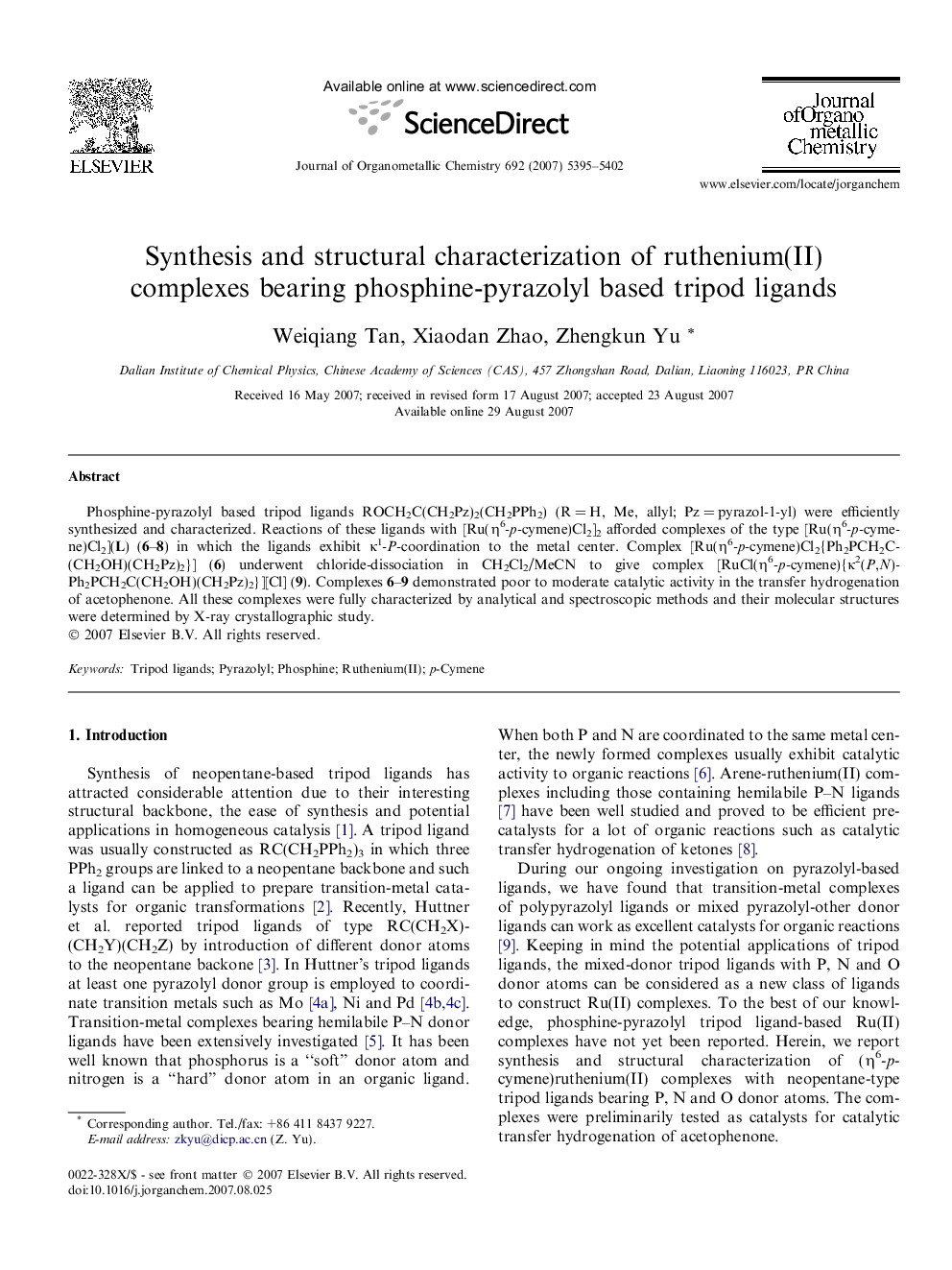| Article ID | Journal | Published Year | Pages | File Type |
|---|---|---|---|---|
| 1328129 | Journal of Organometallic Chemistry | 2007 | 8 Pages |
Phosphine-pyrazolyl based tripod ligands ROCH2C(CH2Pz)2(CH2PPh2) (R = H, Me, allyl; Pz = pyrazol-1-yl) were efficiently synthesized and characterized. Reactions of these ligands with [Ru(η6-p-cymene)Cl2]2 afforded complexes of the type [Ru(η6-p-cymene)Cl2](L) (6–8) in which the ligands exhibit κ1-P-coordination to the metal center. Complex [Ru(η6-p-cymene)Cl2{Ph2PCH2C(CH2OH)(CH2Pz)2}] (6) underwent chloride-dissociation in CH2Cl2/MeCN to give complex [RuCl(η6-p-cymene){κ2(P,N)-Ph2PCH2C(CH2OH)(CH2Pz)2}][Cl] (9). Complexes 6–9 demonstrated poor to moderate catalytic activity in the transfer hydrogenation of acetophenone. All these complexes were fully characterized by analytical and spectroscopic methods and their molecular structures were determined by X-ray crystallographic study.
Graphical abstractPhosphine-pyrazolyl based tripod ligands ROCH2C(CH2Pz)2(CH2PPh2) and the new type of Ru(II) complexes [Ru(η6-p-cymene)Cl2](L) (6–8) were synthesized and structurally characterized. Complex (6, R = H) underwent dissociation in CH2Cl2/MeCN to give complex [RuCl(η6-p-cymene){κ2(P,N)-Ph2PCH2C(CH2OH)(CH2Pz)2}][Cl] (9). Complexes 6–9 have demonstrated potential catalytic activity in the transfer hydrogenation of acetophenone.Figure optionsDownload full-size imageDownload as PowerPoint slide
